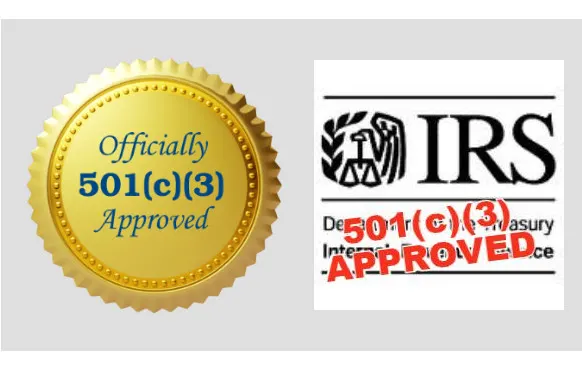Congratulations! You have given everything to get your nonprofit off the ground, you have researched through all of the 501(c) application process and on the other side emerged with tax-exempt status. A massive milestone, to be sure, but our journey is far from complete. That was only the start.
From this point it is open labor: the work you must do henceforth to establish a useful and lasting organization that meets your mission and helps change the world further. The road to nonprofit success, however, is also fraught with pitfalls. Despite their best efforts, many well-intentioned organizations fail due to preventable management distractions that can compromise effectiveness and success.
Welcome to your roadmap for getting through those pitfalls — this article. In this guide, we will explore the most frequent nonprofit management mistakes as well as actionable advice to avoid them and keep your organization on the road to making a difference today and in the years to come.
Nonprofit management, 501(c), nonprofit success
Mistake No. 1: Absence of Strategic Plan

The Problem: Passion and fundraising are pivotal components of any successful nonprofit, but in and of themselves they won’t have a sustainable organization. This would mean that your organization is at the mercy of environmental changes in a sense, and becomes somewhat rudderless or distracted — or at least disorganized with no way to track progress.
The Solution: Create a detailed strategic plan, which includes the following items: What your organization does (mission) Why your organization exists (vision) Which characteristics hold together everything you wish to accomplish and everyone involved in all of it working toward attaining that vision and mission or going nowhere at all (values). This plan will be your blueprint to guide everything you do and to make sure that everyone is working together toward the vision.
Key Steps:
1. Determine Your Mission, Vision And Core Values: What is your why. What future do you envision? What are some of the principles by which you approach your work?
2. SWOT Analysis: Figure ou your Strengths, Weaknesses, Opportunities, and Threats.
3. Create SMART Goals: Specific, Measurable, Achievable, Relevant and Time-bound goals.
4. Strategies and Action Plans: List of the activities that you will do in order to reach your goals.
5. Ongoing Assessment and Revision: Your strategic plan should be dynamic, changing as your organization grows through its ten-year phase.
Mistake No. 2: Broken Fundraising Practices

The Issue: Nonprofit organizations need a steady flow of dollars to be able to sustain themselves while they go about doing their important work. Yet, the reality is that most organizations do not have consistent strategies when it comes to securing funding; they rely on one or a few sources of income and more than often do not diversify in their fundraising approaches.
The Solution: Develop a multi-dimensional fund-raising plan that includes different approaches to give
· Capital Campaigns – Including major donor work and plans to leverage a successful capital campaign into additional revenue via other giving streams.
· Grant Writing: Research and Prepare grant requests from foundations, corporations, and government agencies.
· Corporate Sponsorships: Medium technology partner and sponsor(s) that aligns with the mission for brand campaign INTERMEDIATE
· Online giving: Harness the potential of online platforms and social media to access a broader audience and provide an easy way for supporters to donate.
· Special Events: Conduct fundraisers that involve your community and rally them around your cause.
Key Considerations:
· Maintaining Donor Stewardship: Nurturing a strong relationship with your donors is crucial if you want to have their ongoing support for years to come.
· Transparency and Accountability: let donors know HOW you are using their donations and show impact of your work
Mistake #3: Poor Financial Administration

The Problem: All organizations need to manage their finances well, but perhaps none more so than nonprofits managing donor money. Bad financial habits can cause mismanagement, waste, and even legal troubles.
The Solution: The simple application of strong financial controls and procedures that include but are not limited to:
· Budgeting: Establish an accurate budget that reflects your strategic plan and accounts for all revenue and expenditures.
· Keeping Financial Records: To maintain detailed records of all financial transactions and comply with the regulations for accounting practices.
· Setting up internal controls: the checks and balances that organizations put in place to prevent fraud and protect against misuse of funds.
· Seeking Professional Expertise: You may want to pay an in-house bookkeeper or accountant, but if it is cost-prohibitive embrace that there are several online options.
· Transparency and Reporting: You should consider to constantly prepare financial reports for you the board of directors and open your finance details to the public.
4: Ignoring Board Development and Governance.

The Answer: Develop your board and its governance by…
· Recruitment : Recruit people with the specific skills, experience and interest to help move your mission forward. Diverse in experience, viewpoint and network
· Ensuring Meaningful Orientation and Training Long after their election Ensure that: Resources are devoted to providing a new member with the information and tools necessary to understand the role, including legal and ethical requirements.
· Define Expectations and Assignments: Create a board handbook that clearly states expectations for service, meeting attendance, fundraising, and committee work
· Developing Open-Source Communication and Collaboration: Establish an environment of transparency, trust and dialogue where board members would feel free to exchange their ideas and concerns.
· Evaluating Board Performance: Assess how well the board is functioning and where they improve.
Mistake #5. Not Measuring and Communicating Impact

The Problem: Nonprofits function in an environment largely built around results and that means being able to show what good work you do. Yet measuring and communicating the results of their work remains a challenge for most.
The Solution: Create a comprehensive system for measuring the impact of which:
· Identify Key Customers: Define the specific behavior change you want to result from your programs and services.
· Generate Good Data: Create processes to get the data on impact right (through surveys, interviews, programmatic data, etc.)
· Analyze and interpret: Utilize data analysis methods to identify trends, patterns, and insights that can prove your effectiveness as a growth marketer.
· Shares Impact Stories Well: Use good narrative, data stories and data visualizations; with quotes from beneficiaries · Including on your website, in annual reports, via social media and within grant proposals.
Mistake #6 — The power of marketing/communications in 3 phases

The Problem: Many not-for-profits overlook the ability of good marketing and communications to build awareness, attract supporters, and advance their mission.
The Solution: Establish an integrated marketing and communications program that details:
· Professional Email Checklist:· Defining Your Target Audience · What type of audience will you engage your email message with?
· Develop key messages—what do you want your audience to know, feel, and do? ·
· Determining Communication Channels: How will your target audience stay informed?
· Provide Value: be of service in any way you can, offer high-quality content that informs, entertains or inspires your audience to take action
· Creating relationships with media: Develop relationships with reporters and newspapers to get earned news.
· Social Media: interact with followers, showcase your work (avoid only posting infographics), fucking network.– Attending Events in the Real World
Mistake 7: Neglect of technology and innovation

The Problem: In the modern and continually evolving digital age, nonprofits have to adapt quickly to stay relevant reach new supporters and execute more effectively.
The Solution: Investigate technology and ways to provide meaningful modernizing solutions to your operations like:
· Donor Management Software: Automate the tracking and communication process related to donor information.
· Website and Email Marketing Platforms: Establish your online presence, connect to donors, and push your events and campaigns.
· Social Media Management Tools: For scheduling posts, tracking engagement, and analyzing results.
· Project Management Software: Enhance team collaboration, monitor project progress and manage tasks efficiently.
· Cloud-Based Storage and Collaboration Tools: Improve communication, file-sharing, and ability to work remotely.
Mistake #8: Overlooking Professional Development and Employee Retention
The Problem: Nonprofit organizations often find it difficult to compete with jobs in the commercial sector for talent, especially since hiring and retaining exceptional employees is challenging even if they have good resources. When people frequently cycle through jobs and work under more than ideal conditions, it can be a major disruptor to operations, impair the effective execution of programs, and reduce morale.
The Solution: The solution is to foster a healthy organization culture which focus on professional growth and values contribution of employees.
· Give Competitive Pay and Benefits: You should frequently review salary surveys so that you can keep up with the market in what you offer your staff in terms of wages and benefits.
· Maintain Opportunities for Professional Growth: Help support staff in earning training, certifications and degrees that will provide them the ability to increase their skill level and advance their careers.
· Force of habit for recognition and appreciation: Recognize and honor the achievements and efforts of staff members on a regular basis
· Promote Work-Life Balance: Support a positive work-life balance with flexible work options, ample time-off benefits, and wellness programs.
Conclusion
Nonprofit entrepreneurship is not for the faint of heart, but neither is traditional for-profit business ownership. Avoiding these common mistakes can send your organization on the path to long-term sustainability, impact, and mission success. As they say: building a healthy nonprofit is not a sprint but a marathon. Be patient, and persistent, and never stop learning and adapting to the ever-changing landscape of the nonprofit sector. Contact us at Sarah@mightynews.info for Nonprofit Management solutions.




